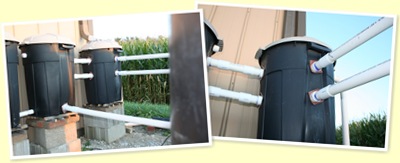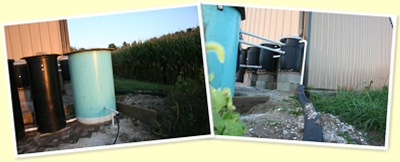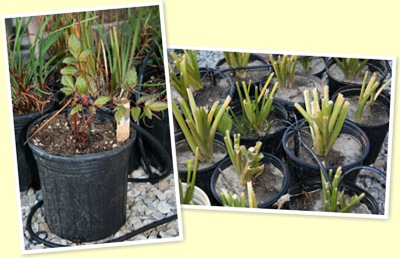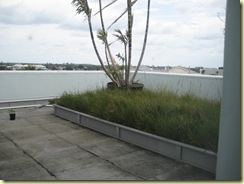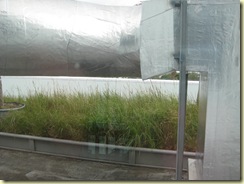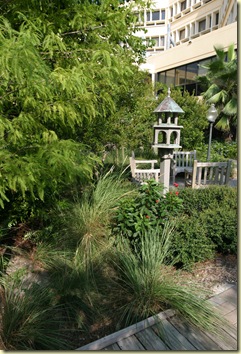Although your test plots are useful for general observations, I would caution you that they do not replicate green roof conditions very well.
Testing with container as small as these will yield results from which you cannot easily base conclusions. The ambient temperature of a roof is a combination of the heat generated by direct and indirect means as well as the insulation provided by the plants and media. The typical high temperature range for a Florida conventional roof is approximately 140+ degrees F, versus the high for a green roof at approximately 80 degrees F (UCF, Dr. Marty Wanielista, 6" planting media + 2" drainage media). We have found our temperatures to be similar.
Your test plots will generate heat that is greater than normal and this will cause plants greater stress and lead you to believe that these conditions are typical of a green roof. the heat will also distort the water balance by excessive drought and cause you to believe that you should irrigate more than you would in a green roof of a larger area. The mortality you experienced is likely due to the heat and perhaps, drought.
As I talk to many professionals that want to know my experience with the UF Green Roof, I find myself explaining that a green roof should not be seen too simplistically. It is not as many believe, a mere planting of plants on a roof. There is much more to consider. It is an environment hotter and drier than a terrestrial landscape. The media performs differently. One must know much more about plants (growth rate, root depth, capacity to retain water, and more) as well as the water cycle/delivery and irrigation system for plant processing.
Your blog comments about plants and their appropriateness for certain media depths. Please be careful with conclusions based from limited tests. For example, I would NOT recommend Muhly Grass for even a 6" media depth. It has not done well on the UF green roof, which is a 5" depth. I would suggest at least 8" or 10" for a healthy plant. If one wants to know for sure, pull up mature plants (from a similar soil and environmental condition) and measure their root system. A depth of 4"-6" is not very much for most plants. Further, with depths that shallow, the choices do not include many ornamental-like natives.
In addition to the characteristic of media depth is another important issue of the media itself. Most green roof product mixes are very well-drained shale-based (or similar type of well-drained soil) and the infiltration rates are much greater than soils in which we are accustomed for use in conventional terrestrial landscapes. Infiltration is rapid and residual saturation is brief.
I would recommend that you increase the plot size as large as you can to correctly base conclusions. I am working on a paper that summarizes my experiences of the past year with the UF Perry Construction Yard Green Roof and it will summarize this and the plant material responses in a North Central Florida environment. Many, but not all of the plants will easily adapt to a South Florida application.
Glenn A. Acomb, ASLA
University of Florida
Department of Landscape Architecture and
The Program for Resource Efficient Communities
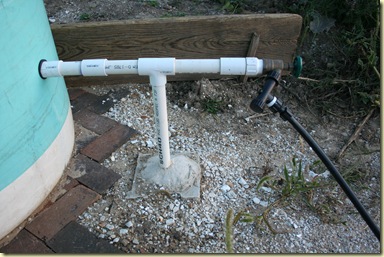
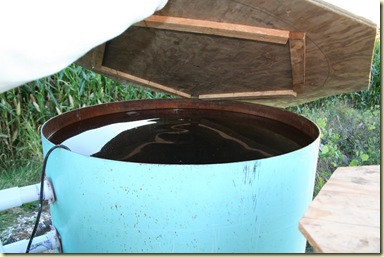 The overflow is piped into the adjacent corn field.
The overflow is piped into the adjacent corn field. 
